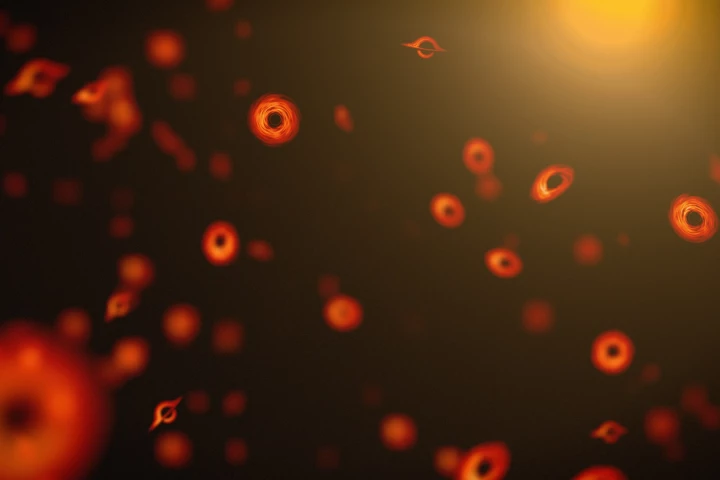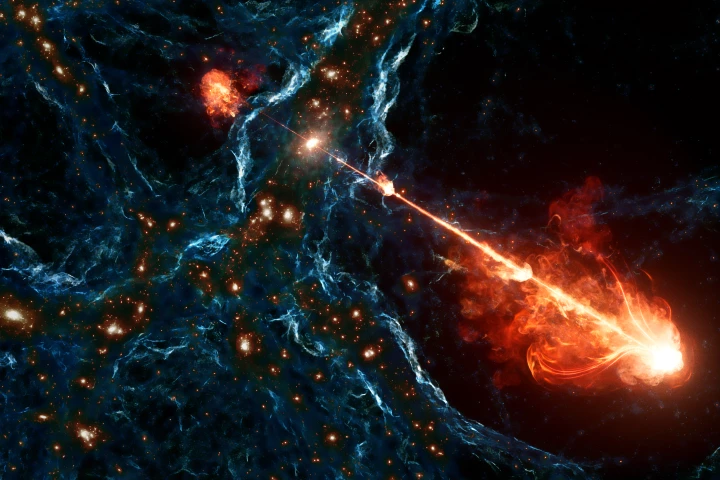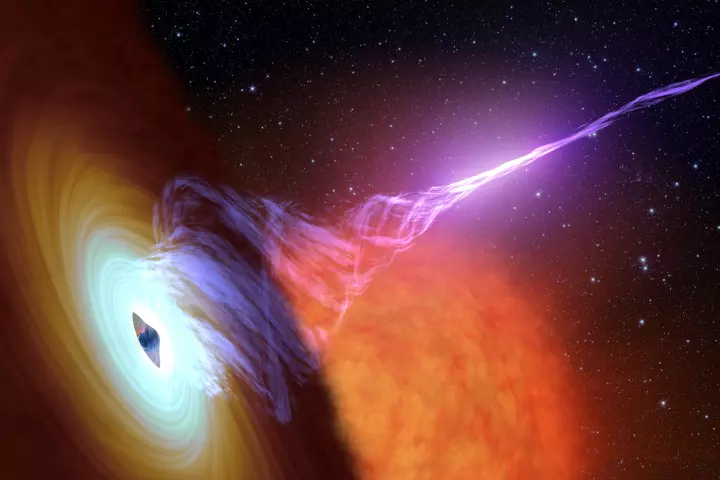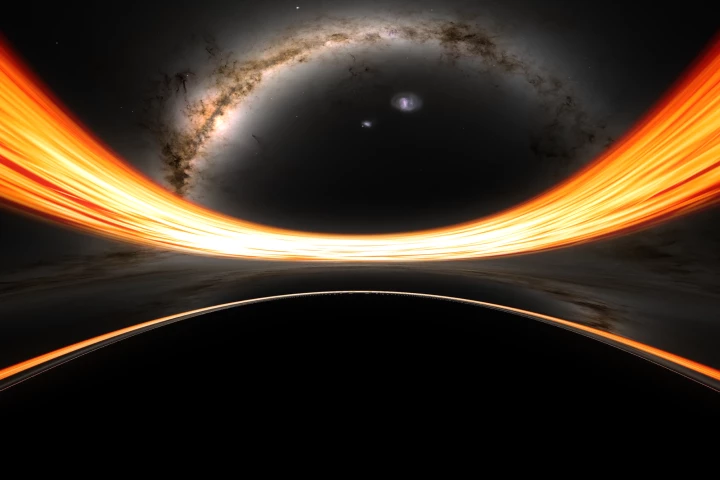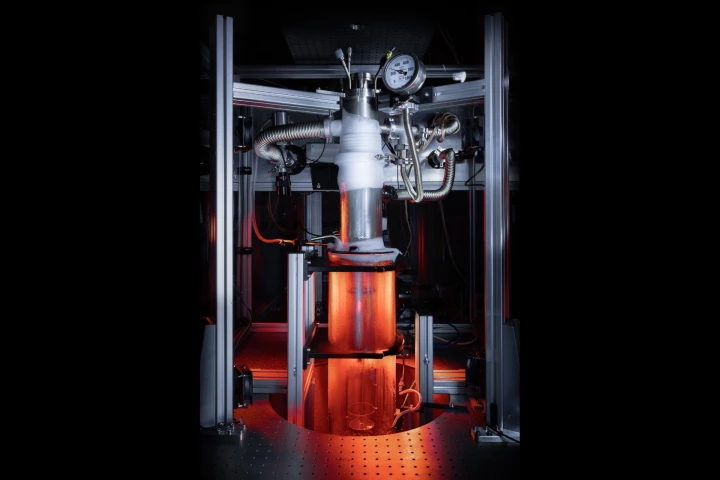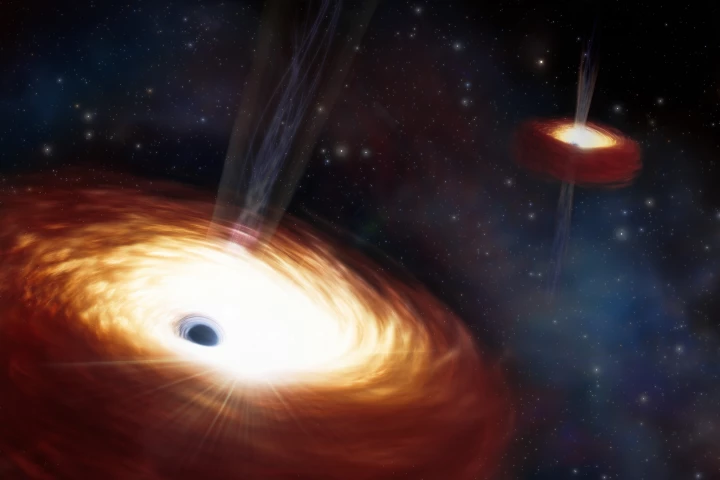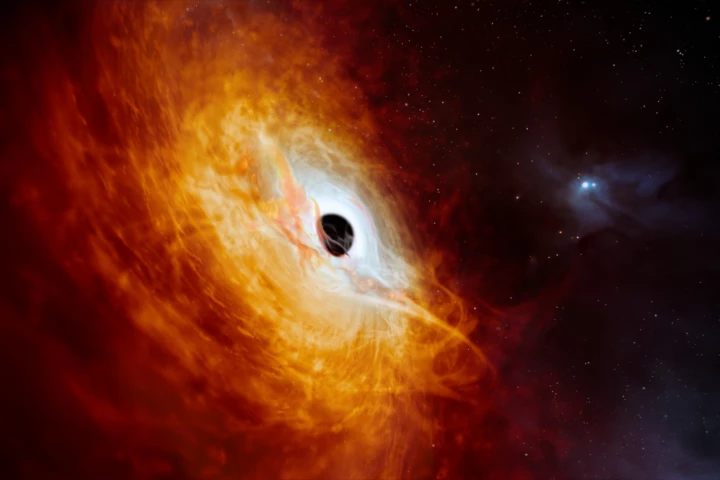Black hole
-
To find black holes we usually have to look thousands of light-years away. But a new study suggests we could find evidence of them right here on Earth, as tiny tunnels they’ve carved out in rocks or old buildings.
-
Astronomers have spotted an absolutely colossal cosmic chimney that stretches as far as 140 Milky Ways lined up side by side. These jumbo jets are being blasted from a supermassive black hole.
-
Astronomers have watched a supermassive black hole take two bites of a star, and predicted when it might go back for a third. If it does, this should make for an intriguing stellar light show.
-
Supermassive black holes have been known to belch gigantic beams of plasma into space – and now scientists have managed to recreate these fireballs in a lab at CERN.
-
What would it look like to fall into a black hole? It’s a question basically everyone has pondered, and now NASA has finally given us a first-person view of the experience with scientifically-accurate visualizations produced by a supercomputer.
-
A giant quantum vortex has been created in superfluid helium in a lab at the University of Nottingham. Its behavior was found to mimic that of black holes and may help astrophysicists gain deeper insight into these galactic gravity gobblers.
-
We’ve all regretted taking too long to make a move, but at least it wasn't 3 billion years. That’s how long the sexual tension has been building between two slow-dancing supermassive black holes, whose eventual congress could rock the entire universe.
-
The brightest object in the known universe has just been found. It's a supermassive black hole with the mass of 17 billion Suns, and it swallows another Suns’ worth of material every day, making it also the fastest-growing black hole ever found.
-
A supermassive monster lurks at the center of our galaxy, and astronomers have now discovered that it’s spinning so fast it’s warping the very fabric of spacetime into a football shape.
-
Astronomers have discovered the most distant – and therefore earliest – known black hole. Hiding in a galaxy called GN-z11, this black hole is bigger than should be possible given the age of the universe.
-
Astronomers have discovered a neutron star orbiting a mysterious object that, by all accounts, shouldn’t be able to exist. Seemingly invisible in light, and too small to be a black hole, the object defies explanation.
-
Black holes are famous for gobbling up everything – but could they ever be swallowed whole? A new study suggests stars could capture very small black holes. There might even be a way to find them, and if so, they could help us understand dark matter.
Load More
